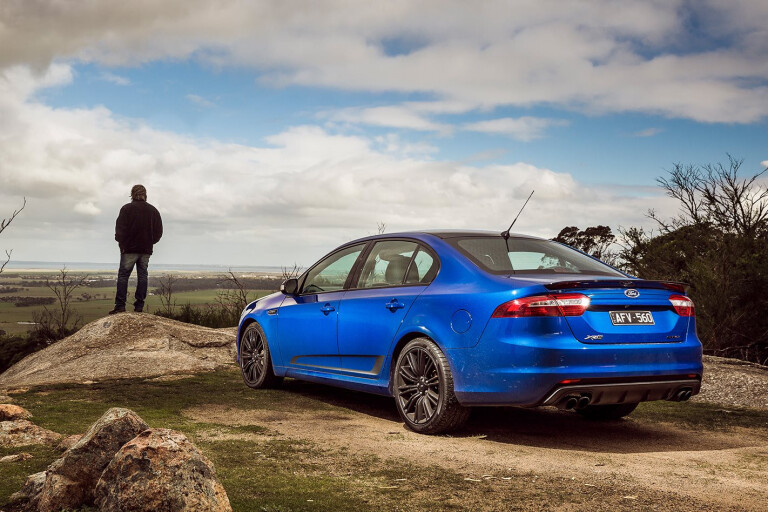
Oh well, I suppose it has come to this.” The quote is from Ned Kelly, allegedly uttered as he stepped on to the gallows at Old Melbourne Gaol on November 11, 1880.
If old Ned did make the statement, it was surely a sign that he knew the jig was finally up. The fat lady had sung. And as a yardstick for the way we fans of local performance cars are feeling, it’s capital-P poignant.
Just as surely as Ned knew he was going to swing for killing three troopers at Stringybark Creek two years earlier, the news that Ford is turning off the presses and powering down its Aussie production line for the last time comes as no surprise. But it’s no less final, nor any less irreversible. And it’s no less tragic.
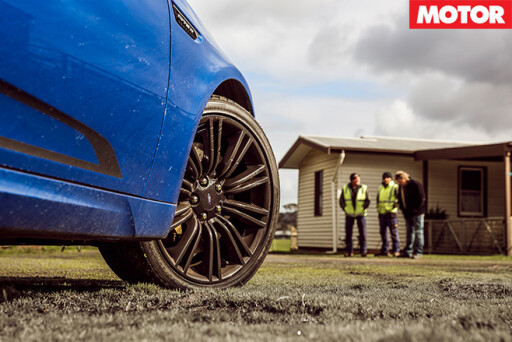 In Ned’s case, one man’s life was snuffed out in retaliation for the death of three others. But in Ford Australia’s case, the end result is the inevitable solution when you add globalisation to government short-sightedness and divide by changing consumer tastes. The treatment of Ned Kelly would be deemed brutal, unnecessary and inhumane these days. Again, I’m seeing parallels in the Final Ford Solution.
In Ned’s case, one man’s life was snuffed out in retaliation for the death of three others. But in Ford Australia’s case, the end result is the inevitable solution when you add globalisation to government short-sightedness and divide by changing consumer tastes. The treatment of Ned Kelly would be deemed brutal, unnecessary and inhumane these days. Again, I’m seeing parallels in the Final Ford Solution.
But I’ll be damned if that’s going to stop me grabbing the last of the hairy-chested Falcons, the XR8 Sprint, and pointing it at a few Ford Oz landmarks. Call it nostalgia – for old time’s sake – a blown-V8 trip down Memory Lane.
But whatever you call it, you can’t escape the sense of loss and wonder what might have been; it’s a feeling amplified every time one of those big Miami pistons takes a force-fed journey down its beautifully honed bore.
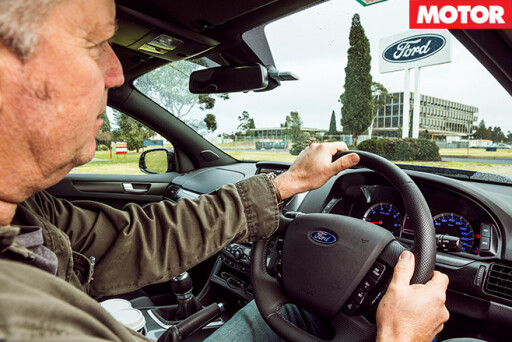 First stop, Ford’s Broadmeadows headquarters. A Ford insider once told me (and then immediately regretted it) that the roof of the Broady HQ had been designed to withstand eight feet of snow.
First stop, Ford’s Broadmeadows headquarters. A Ford insider once told me (and then immediately regretted it) that the roof of the Broady HQ had been designed to withstand eight feet of snow.
This, apparently, was the standard to which all Ford headquarters were built, regardless of where they were located. Forget the fact that it doesn’t even rain at Broadmeadows. In a way, I reckon that building code is a metaphor for what’s going on here in 2016: Ford is doing things in a global way for a global market and that doesn’t include an outpost doing its own thing. Especially if it refuses to snow out there in Ass-Trailer.
Announced in 1958, the multi-storey bunker was part of the bigger plan to shift manufacturing away from Geelong to the new site – a giant paddock in those days – in Broadmeadows. Typically, Ford got the land cheap (500 quid per acre for all 450 acres – call it 180-odd hectares) and the state government even graciously rezoned the land for heavy industry, such was the vote-grabbing potential of what was then the biggest automotive plant in the southern hemisphere.
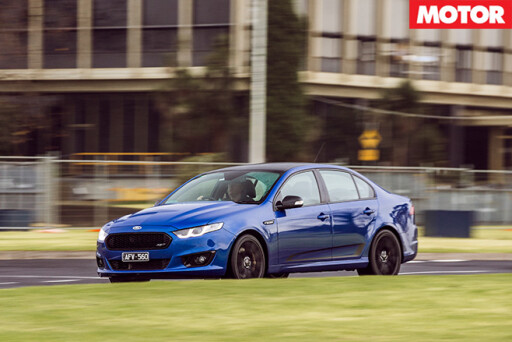 The production facility itself was one of the biggest industrial buildings anywhere in the country and was initially designed for about 2750 workers to build 200 cars per day. All up, the Broady site consumed 11 million pounds while another seven million quid was invested in Geelong to build the new six-cylinder engine destined for the all-Aussie Falcon.
The production facility itself was one of the biggest industrial buildings anywhere in the country and was initially designed for about 2750 workers to build 200 cars per day. All up, the Broady site consumed 11 million pounds while another seven million quid was invested in Geelong to build the new six-cylinder engine destined for the all-Aussie Falcon.
These days, the whole place has – if you’ll excuse the term – the smell of death about it. The production line is, from the outside, just a big shed (and has always been thus) and head office, which must have looked like it had been dropped from a space-ship in 1950s Broadmeadows, is barricaded off while the building is gutted and repurposed as Ford’s Asia-Pacific design centre of excellence. Or somesuch.
When that becomes reality, clearly the stench of rigor-mortis will lift and the place will become inhabited by critters other than the sparrows and spiders that live there now, but in the meantime, it all looks awfully bleak.
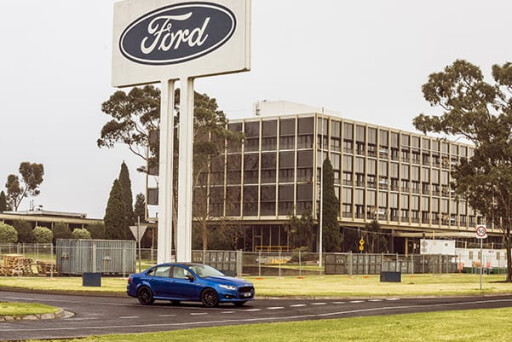 Mind you, it was never really what you’d call a warm or welcoming place. If you could get past the receptionist and, say, up to the third floor, you were constantly struck by the dodgy wood paneling and sharp ’60s lines that matched the flat-roofed exterior perfectly.
Mind you, it was never really what you’d call a warm or welcoming place. If you could get past the receptionist and, say, up to the third floor, you were constantly struck by the dodgy wood paneling and sharp ’60s lines that matched the flat-roofed exterior perfectly.
A little piece of Canberra in Melbourne’s outer north. If The Brady Bunch had been set in a boardroom, it would have looked like this joint. At least you know what inspired the tacky, fake timber trim on the Squire wagon.
But the Laminex-clad Squire was the exception and the bulk of Falcon models that came out of this place have been dynamic and, for their time, right up there with anything when it comes to appealing to a chap or chapette who reckoned it was at least partly about the journey and not just the destination.

Time to hit the freeway and then some back roads; both Falcon strengths over the years. In fact, I’ve driven a 1960 XK Falcon and even if it was a bit low-tech, it was more than capable of cruising at 110km/h.
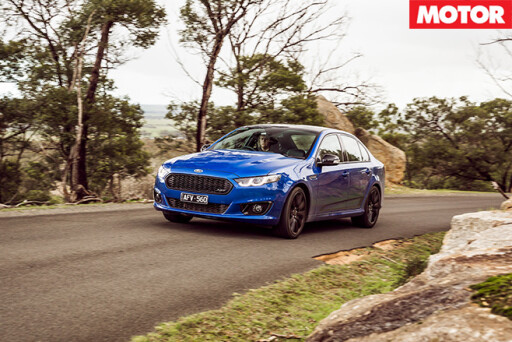 Although the steering had more turns lock-to-lock than a garden tap, it was surprisingly agile and light to drive. The die was cast and, as suspension got better and engines got bigger, it all improved year-on-year.
Although the steering had more turns lock-to-lock than a garden tap, it was surprisingly agile and light to drive. The die was cast and, as suspension got better and engines got bigger, it all improved year-on-year.
The big advance came in 1967 when Ford took the step of using a V8 engine to create a performance car rather than – as Valiant had done – a luxury car. And it doesn’t matter whether you’re a Ford or Holden fan, if you love a grunty family car with a great soundtrack, then you owe the XR GT of 1967 a huge debt of gratitude.
Those coke-bottle XR/T/W and XY cars eventually morphed into the mighty Phase III, but even after the supercar scare of the early ’70s, you could still strap into a Falcon with a 351 cubic-inch Cleveland plant for just a few hundred bucks more than the base Falcon 500.
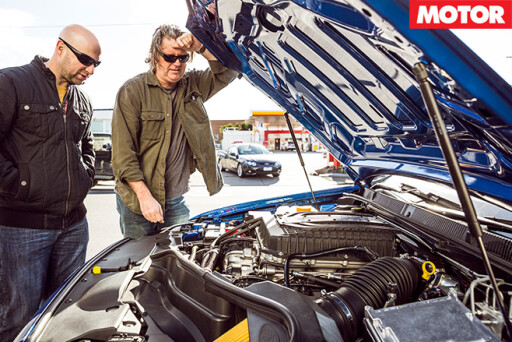 The plot was lost (or given up without a fight) in 1984 when Ford decided it knew best and diced the V8 option. Not for nothing is this considered the Blue Oval’s dopiest move in more than five decades of sometimes dubious marketing. Even Ford’s loyalest, staunchest soldier, Dick Johnson, had to abandon his Falcon come Bathurst and move to a poxy compact Mustang instead.
The plot was lost (or given up without a fight) in 1984 when Ford decided it knew best and diced the V8 option. Not for nothing is this considered the Blue Oval’s dopiest move in more than five decades of sometimes dubious marketing. Even Ford’s loyalest, staunchest soldier, Dick Johnson, had to abandon his Falcon come Bathurst and move to a poxy compact Mustang instead.
It took Ford almost a decade to wake up to its stupidity and reinstate the V8 and when it did, it was the EB Falcon with a 5.0-litre Windsor under the lid. Despite the Windsor V8 being used globally mostly for inboard-mounted boat engines, Ford Oz developed the driveline to the point where it was displacing 5.6 litres and cranking out 250kW.
 The game had moved on, but the Falcon was still well and truly in it. Naturally, MOTOR mag was part of it, too, and we actually secured a long-term AU Falcon Series 3 with the stroker engine. In fact, I went out to Tickford to hand-build the engine (they were all hand-built, just not by me) yet despite my hammy fists, that motor was the gruntiest 5.6 we’d ever sampled. Liked a drink, but. (It, not me. Okay, both of us.)
The game had moved on, but the Falcon was still well and truly in it. Naturally, MOTOR mag was part of it, too, and we actually secured a long-term AU Falcon Series 3 with the stroker engine. In fact, I went out to Tickford to hand-build the engine (they were all hand-built, just not by me) yet despite my hammy fists, that motor was the gruntiest 5.6 we’d ever sampled. Liked a drink, but. (It, not me. Okay, both of us.)
We arrive at You Yangs mid-morning after watching what looked like three-quarters of Geelong going the other way on the Princes Highway. How do people do this every day? At least if you had a job at the You Yangs you wouldn’t have been battling peak hour and if you drove a Falcon to work, you at least had yourself a proper driver’s car.
Mind you, if you’d been a test driver you probably would have got the odd whiff of kangaroo, too, because the place is crawling with them. Of course, I can see how they get in; the fencing here just isn’t up to the job of keeping a large, furry critter able to leap two storeys at bay. It couldn’t keep a young motoring journo and his freelance photographer mate out back in the day, either.
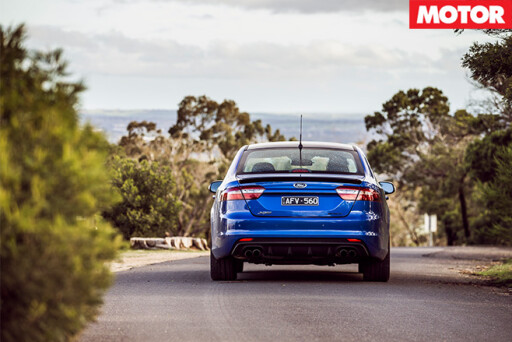 See, my first ever visit to the You Yangs proving ground occurred in late 1987 when my happy-snapper mate Ronny and I snuck in through the adjacent rifle range before dawn, climbed under the wire fence and set ourselves up in a convenient bush beside the ride/handling track.
See, my first ever visit to the You Yangs proving ground occurred in late 1987 when my happy-snapper mate Ronny and I snuck in through the adjacent rifle range before dawn, climbed under the wire fence and set ourselves up in a convenient bush beside the ride/handling track.
Our plan was to spring the new-for-’88 EA Falcon as it underwent final testing. We did, too, and our blurry shot of the EA with a fifth wheel attached made the cover of Car Australia (which is now MOTOR) much to the chagrin of Ford’s PR folks and, presumably, their higher-ups. Somehow, we did it without being spotted. Somewhere, I still have a glove in that bush, lost as we scrambled for the perimeter when the security guards got too close. Happy days.
The You Yangs Proving Ground was built between the rocky outcrops that spring from the windswept plains outside Geelong in 1965. According to legend, after Henry Ford II heard about Aussie Falcons failing in service, he made a surprise visit to get to the bottom of it.
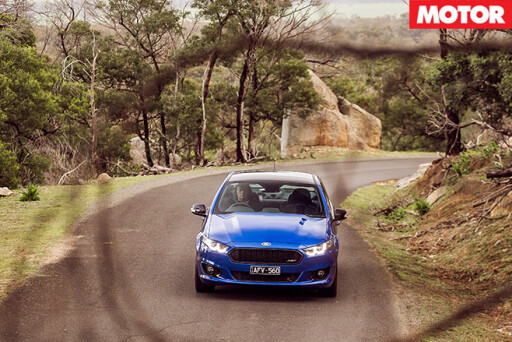 When told that the failures were due to a lack of robustness in the parts, Hank the Deuce allegedly told Ford’s Aussie brass that they could have a proving ground, but that he “never wanted to hear about another failure”.
When told that the failures were due to a lack of robustness in the parts, Hank the Deuce allegedly told Ford’s Aussie brass that they could have a proving ground, but that he “never wanted to hear about another failure”.
The proving ground’s finest moment came in its first 12 months when Ford hatched the crazy idea to drive five of its bog-stock new XP Falcons over 70,000 miles, non-stop over five days to remove the memories of the earlier failures. Crazily, it worked although it wasn’t without its moments.
My mate, the late Bill Tuckey, was one of the drivers conscripted to help with the driving and recalled that it was dangerous and scary in equal measures. Bill told me that all but one of the five Falcons was rolled (some went tits-up several times) and by the end of the five days, they were all held together with “wire, straps and race tape”. But it worked and the publicity and plaudits were huge. More than that, the move saved both the Falcon and Ford Australia.
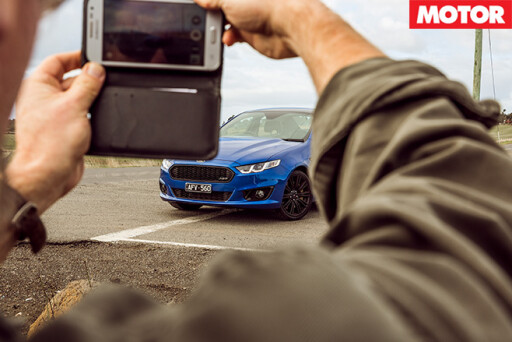 But I think it also tells you a bit about the time. See, while we tend to think that a Falcon without power steering, four-wheel discs and air-con (or even a heater) as a bit primitive, it pays to remember that multiple roll-overs were not enough to prevent an XP Falcon being driven day and night at an average of 70 miles-per-hour.
But I think it also tells you a bit about the time. See, while we tend to think that a Falcon without power steering, four-wheel discs and air-con (or even a heater) as a bit primitive, it pays to remember that multiple roll-overs were not enough to prevent an XP Falcon being driven day and night at an average of 70 miles-per-hour.
That sort of thing still kind of appeals to me… in a weird way. I think that could be an Australian thing, but, whatever it is, successive generations of Falcons have tapped into it.
Like the Broadmeadows bunker, You Yangs is set to stay within Ford ownership and also has a brighter-than-you-might-think future. It will remain a hub for testing in the Asia-Pacific region and will work with the engineering and design centre back at Broady.
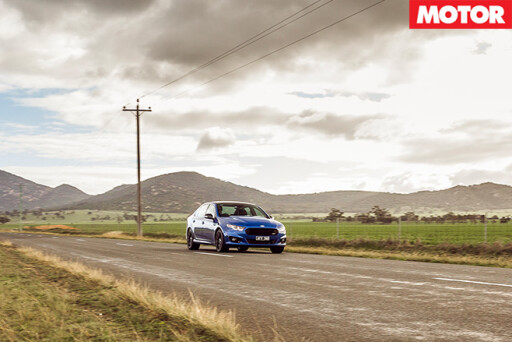 Mind you, the joint has a few runs on the board, including a big part of the development of the Ford Ranger, Everest and the Figo hatchback sold in India. And every fast Falcon ever made has been honed on the You Yangs high-speed bowl.
Mind you, the joint has a few runs on the board, including a big part of the development of the Ford Ranger, Everest and the Figo hatchback sold in India. And every fast Falcon ever made has been honed on the You Yangs high-speed bowl.
The facility will also remain one of just a handful of fully-equipped Ford proving grounds on the planet. Of all the places on today’s itinerary, the You Yangs Proving Ground stands to lose the least as the production line grinds to a halt.
From the You Yangs we head south to Geelong and the terrain looks eerily familiar. Well, it does to a bloke like me who has spent too many late nights with green cans, cold pizza and re-runs of the original (and best) Mad Max movie.
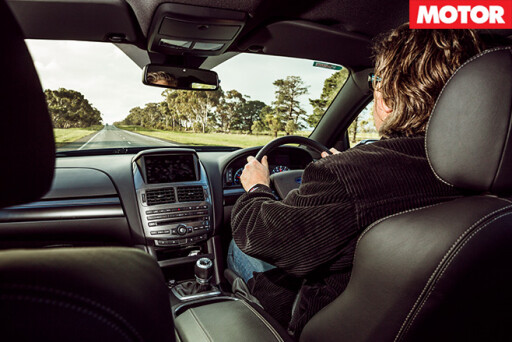 The roads around the town of Anakie (what an appropriate name) were the setting for much of that first Max epic and, even though at this time of year the grass is fluouro-green, it’s still being blown sideways by a chilling wind. It all looks totally familiar.
The roads around the town of Anakie (what an appropriate name) were the setting for much of that first Max epic and, even though at this time of year the grass is fluouro-green, it’s still being blown sideways by a chilling wind. It all looks totally familiar.
Soon, though, we’re rolling into Geelong, a town that I reckon cops an unfair degree of crap – but screw the intelligentsia: a lot of those same dickheads probably didn’t like Mad Max. And they likely hated the sinister, black, blown two-door Falcon Hardtop that absolutely made that flick and helped the Falcon GT along the path to immortality.
Ford’s facilities in Geelong are the oldest in the local Blue Oval portfolio. As they would be because it was in Geelong that Ford Australia was created back in 1925. The lure of getting rid of the profit margin going to its distributors in Australia and the hassles with high import duties, convinced head office in Dearborn that a plant in each state, other than Tasmania, was a great idea.
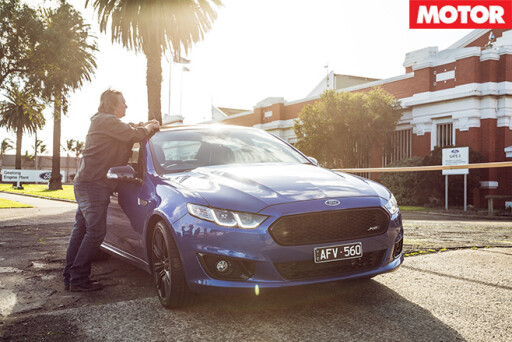 Initially it was Model Ts that were assembled at the Aussie plants with tricks like the boxes the parts arrived in being used as the floorboards of the Tin Lizzies. Or so the story goes.
Initially it was Model Ts that were assembled at the Aussie plants with tricks like the boxes the parts arrived in being used as the floorboards of the Tin Lizzies. Or so the story goes.
Ford and Geelong have enormous history, of course, with the most recent activities in the coastal city being the production of the Falcon six-cylinder engine; a task the Geelong plant had been responsible for since the XK Falcon hit showrooms back in April 1960. It received a reprieve in late-2008 when it was suggested it should close.
But demand for the Falcon’s inline-six was still strong and it was granted a stay of execution, along with a cash injection of $21 million to bring the 4.0-litre six into line with Euro IV emission targets. But nothing, it seems, lasts forever.
 It was arguably the Falcon six that stamped the Falcon as a proper driving car. Back in the day, the first Falcon could be had with the optional ‘big-block’ 170 cubic-inch (2.8-litre) mill, complete with 75kW of power. And in a straight line it absolutely buried the 56kW Holden FB against which it sold. And that’s before we even hold the sleek, modern Falcon up against the dumpy, frumpy, upright FB Holden.
It was arguably the Falcon six that stamped the Falcon as a proper driving car. Back in the day, the first Falcon could be had with the optional ‘big-block’ 170 cubic-inch (2.8-litre) mill, complete with 75kW of power. And in a straight line it absolutely buried the 56kW Holden FB against which it sold. And that’s before we even hold the sleek, modern Falcon up against the dumpy, frumpy, upright FB Holden.
And I’ll tell you how inseparable Ford and Geelong are these days: The company’s sponsorship of the Geelong Cats footy club is the longest running, continuous sporting sponsorship deal in the world. Apparently.
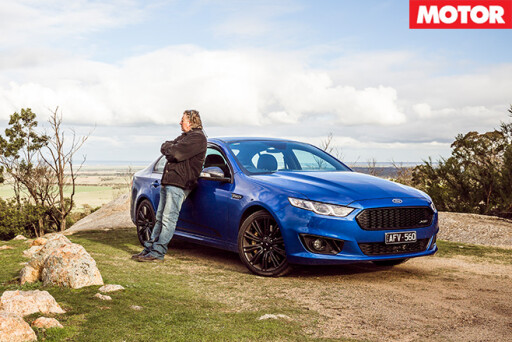 These days, the red-brick Geelong engine plant strikes you as a big joint, stretching for hundreds of metres along the main road into Geelong from the east, but I confess, I’ve never set foot in it. Now it looks like I never will.
These days, the red-brick Geelong engine plant strikes you as a big joint, stretching for hundreds of metres along the main road into Geelong from the east, but I confess, I’ve never set foot in it. Now it looks like I never will.
It’s back on the road and back towards Melbourne and it occurs to me that I’m sitting in the last Falcon test car I’ll probably ever drive. Given that I’ve road-tested every model since (and including) the XF, this seems like a fairly momentous occasion. For all the wrong reasons. It doesn’t seem fair; it doesn’t seem right. But that’s how it is. As Ned Kelly put it (in his other oft-quoted pronouncement that day in 1880): Such is life.

COMMENTS